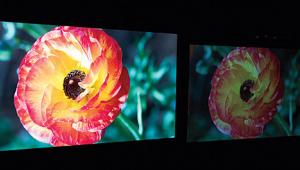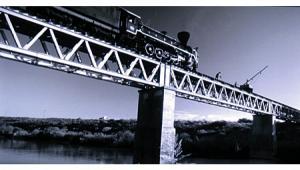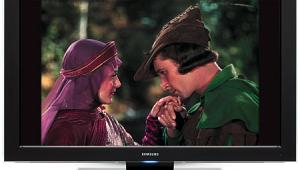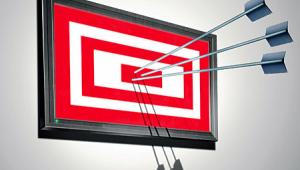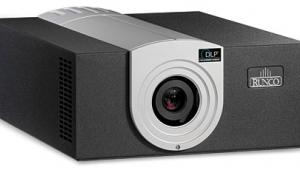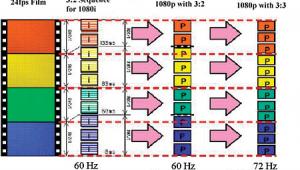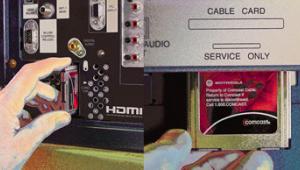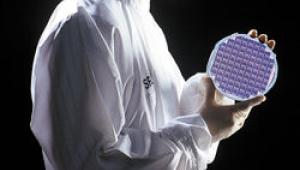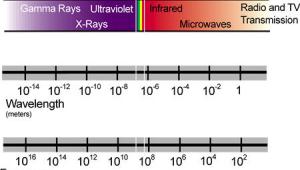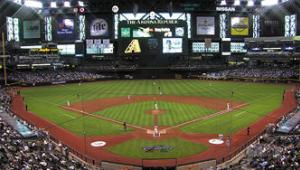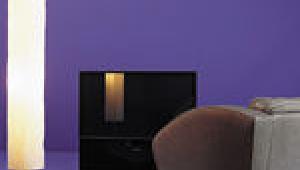Who Needs Light Bulbs? Part II
If there is one thing that just screams "future" to me, it's lasers. Sure, they've been around since the 1960s, but come on—it's lasers! Right now, they can be found in your CD and DVD players, but a few companies are hoping to put them in your TV, as well.
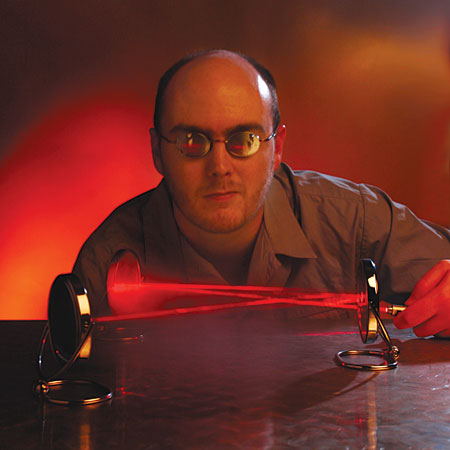
The word itself is an acronym for Light Amplification by Stimulated Emission of Radiation. A typical laser starts with a tube full of a "lasing medium" that can be a solid (like a ruby), a gas, some chemicals, or even a dye. A light flashes this medium, causing some of the material's electrons to get all excited. As they return to their normal state, they release a photon, which in turn can cause some other poor electron to get excited, and the reaction continues. As these photons build up and continue to bounce around, they end up bumping into the mirrors that bracket the medium. The mirror at one end lets a little bit of the light through. This light, the laser light, is one wavelength (one color) and coherent (all the photons are marching together in the same direction). In the case of your DVD player and what will be found in TVs, the apparatus is a far simpler and less interesting semiconductor or diode laser that works in much the same way as the LEDs from "Part I" in the July issue.
But in a TV?
Anyone who's been near a laser probably remembers the warning, "Avoid direct eye exposure." This is because all but the lowest-powered lasers can cause permanent damage to your eyes (not good). So, how can a TV, which you look at, be made of lasers, which you shouldn't look at? It's a lot simpler than you'd think. The lasers are shot at lenses that expand the beam to fill the DMD (if the TV is DLP based); then another set of lenses expand the light to fill the screen (just like in a regular RPTV). The screen itself adds a final layer of diffusion. The light assembly can be less complex, as you're expanding a concentrated beam of light instead of condensing and collecting the incoherent light from a UHP lamp.
How
LCD, DLP, and LCOS projection TVs have historically used UHP or similar lamps for their light sources. Some companies are starting to use LEDs. Mitsubishi, a company called Coherent, and a few others are instead using lasers. There are three lasers inside these TVs, and each puts out a different wavelength, one each for red, green, and blue. This means there's no color wheel, and the rate at which the display can switch the colors on and off is significantly higher than what is possible with a color wheel. This should mean fewer rainbows. One concern, however, is "speckle," which looks like it sounds and is familiar to anyone who has seen a laser. According to the spin, manufacturers will be able to overcome speckle, but we shall see. The very early prototype that Mitsubishi showed us at their line show had visible speckle, but they have at least a year to correct it.
Does It Work?
One of LED's advantages over UHP is significantly less heat. That doesn't seem to be the case with the laser, which is said to have thermal properties similar to those of a lamp. Life span is still a question. Manufacturers are aiming at 20,000 hours, although testing is still being done. The laser light engine is a lot more complex than that of a lamp, so it won't be replaceable; but, at 20,000 hours, this shouldn't be an issue for most people. A laser also works until it doesn't, without dimming over time like a UHP lamp. All over, manufacturers are saying that lasers have a wider color gamut than other technologies. That's all well and good, but how accurate are they first? Wider doesn't mean better. You can adjust each laser individually, so accurate color points and color temperatures are possible, but it's up to the manufacturers to implement this ability. Power consumption will surely be less than with UHP and perhaps even less than with LED.
The Future Is. . .Almost Now
There are still some bugs to be worked out, but lasers hold the promise of lower power consumption, more light output, and better color than today's RPTVs. We shall see.


